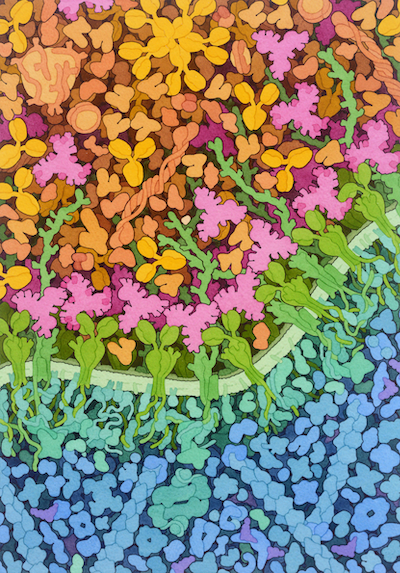Molecular Landscapes by David S. Goodsell
HIV Vaccine, 2022
Acknowledgement: David S. Goodsell, RCSB Protein Data Bank and Scripps Research. doi: 10.2210/rcsb_pdb/goodsell-gallery-043
This painting shows a new approach to designing vaccines, termed "germline-targeting." The vaccine challenges the immune system with several levels of glycosylation on the vaccine molecule: specific glycans that obscure an epitope are removed from the immunogen, which primes the immune system. In subsequent vaccinations, the glycans are restored to simulate a mature/native protein. Here, a solubilized version of HIV envelope glycoprotein (magenta) is used for the vaccine, and two levels of glycosylation are shown: one fully-glycosylated and one with glycans removed at the receptor-binding site. The glycans that are removed are shown in slightly darker magenta. The vaccine glycoproteins are binding to B-cell receptors (Y-shaped molecules in yellow-green) on the surface of a B-cell (membrane in green, cytoplasm in blue) and activating many signaling proteins inside the cell (shown in blue-green on the inner side of the membrane). Blood plasma is at top, with Y-shaped antibodies in yellow.
Painting created in collaboration with T. G. Caniels in the laboratory of Rogier Sanders at University of Amsterdam and Amsterdam UMC.




